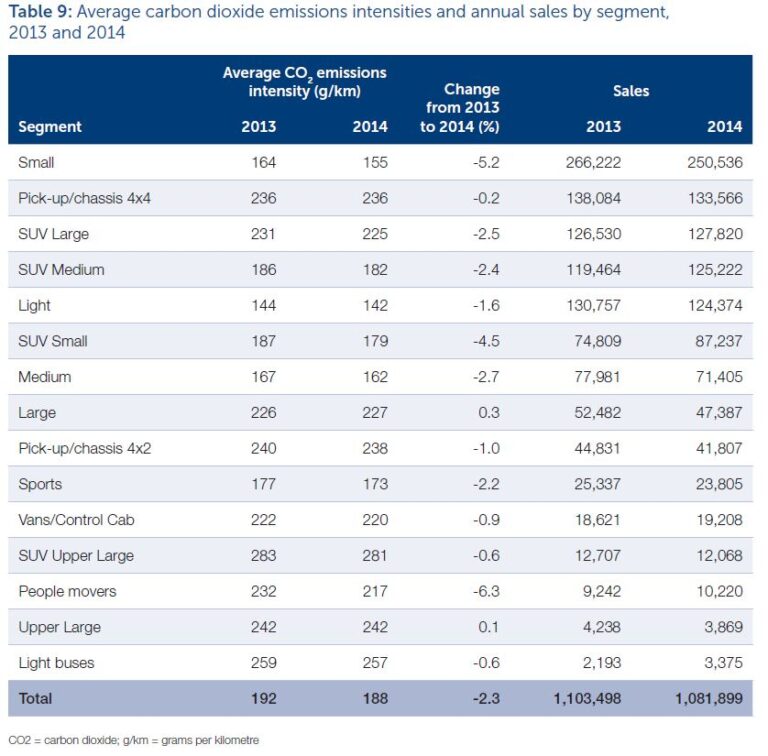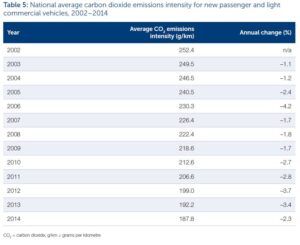– By Carolyn Taylor –
In its most recent update, the National Transport Commission (NTC) announced that “Australians are choosing to buy more fuel efficient cars than they were ten years ago.” And as a result, carbon emissions of the new motor vehicle fleet are on the decline.
Released in April 2015, the NTC’s Carbon Dioxide Emissions Intensity for New Australian Light Vehicles 2014 information paper, focuses on vehicle intensity, which is a measurement of grams of carbon dioxide per kilometre (g/km).
At 188 g/km of CO2, the Australian national average for 2014 has fallen 2.4 per cent compared to 2013. This follows a 3.4 per cent fall in the previous year and a total decline of almost 26 per cent since 2002.
It is clear that consumer preference is a major factor. In 2001/02 the highest selling vehicles were the Holden Commodore and Ford Falcon but in 2014 the Toyota Corolla and Mazda 3 were the top sellers. Coupled with this, is the industry’s commitment to improving technology. New light vehicles* are now about 25 per cent more fuel efficient than they were in 2000.
Interestingly though, if all Australians buying a new car in 2014 chose a vehicle with best-in-class emissions, the national average would be 34 per cent below the 2013 national average. In the small vehicle sector alone, the difference between the highest and lowest emitter is a whopping 42 per cent.
It could be argued that the 2014 improvement is merely part of a historical trend, influenced by changing consumer preferences and improvements in technology. CO2 emissions have been falling consistently since 2002 (see table below) and average emissions in the small vehicle sector, which currently represents 23 per cent of total sales, are down 5.2 per cent (the second highest fall of 2014).
National average carbon dioxide emissions intensity for new passenger and light commercial vehicles, 2002–2014
Despite these improvements, Australian emissions are still well above the European Union (43 per cent higher). According to the NTC, this is due to there being less choice of lower CO2 emitting vehicles, as well as fewer government policies aimed at reducing CO2 emissions from motor vehicles.
The Federal Chamber of Automotive Industries (FCAI) has been supportive of setting mandatory CO2 targets. They have suggested that a realistic, achievable but challenging target be considered with attention paid to Australia’s unique operational and economic environment.
While there has been a move towards smaller vehicles, Australians continue to have a preference for vehicles with larger engines and automatic transmissions. Medium to large SUVs accounted for 23% of 2014 sales and are seen by many as being more suited to long distance travel and Australian conditions.
The report also found that private buyers were the most environmentally aware, followed by business (fleet) buyers, then the government. Interestingly government buyers are doing the worst on both fronts. Emissions were 7 per cent above fleet buyers and almost 14% above private buyers. Additionally, of the buyer types, the government has contributed only a 1.5 per cent reduction in emissions in 2014, compared to 2.1 per cent for private buyers and 2.5 per cent for fleet buyers.
Click here for the full report.
* New light vehicles includes passenger motor vehicles, SUVs and light commercial vehicles.







